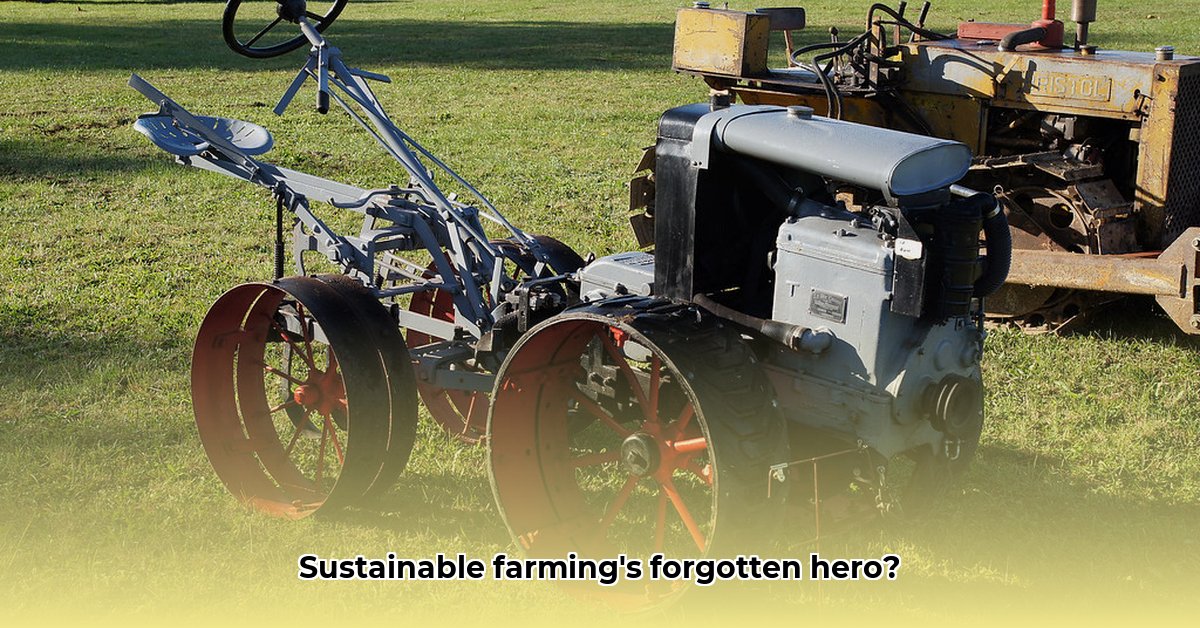
Imagine the American heartland in the early 1900s: vast fields stretching to the horizon, worked by the tireless strength of horses and the sweat of farmers. This was a world of backbreaking labor, where the success of a harvest hinged on the capriciousness of nature and the stamina of animals. Then came the Centaur tractor, a relatively unknown machine that quietly revolutionized farming practices, offering a glimpse into a more efficient future. While overshadowed by its larger, more famous contemporaries, the Centaur's story offers valuable insights into early 20th-century agricultural innovation and its surprising relevance to modern sustainable agriculture. For more vintage tractor information, check out this useful resource.
Centaur Tractor: A Smaller Tractor, a Bigger Impact
The Central Ohio Tractor Company, the Centaur's creators, didn't aim to build for massive farms. Instead, they focused on the smaller family farms that formed the backbone of American agriculture. They envisioned a machine that was both powerful and nimble, capable of navigating smaller fields and uneven terrain – the "compact car" of the tractor world. This focus on accessibility made a significant difference in the lives of many farmers.
The Centaur's Ingenious "Klear View" Design
The Centaur's most innovative feature was its “Klear View” design. Picture operating a large machine with restricted visibility – dangerous and inefficient. The Centaur addressed this with vastly improved operator visibility, enhancing both safety and productivity. This seemingly minor detail significantly impacted daily farm life, making the tractor safer and more efficient.
Power and Progress: Engine Upgrades and Adaptations
The Centaur was not a static design. Later models incorporated the powerful Le Roi engine, dramatically boosting horsepower and allowing farmers to work larger fields, a testament to the company's responsiveness to farmer needs. This continuous improvement highlights the iterative nature of technological advancements in responding to challenges.
The Centaur's Rise and Fall: War, Economics, and Legacy
The Centaur's journey wasn't without its obstacles. World War II significantly impacted production, diverting resources towards vital wartime needs. The post-war economic climate and competition from larger manufacturers presented additional challenges. These factors, combined with the changing agricultural landscape, ultimately led to the Centaur’s merger with Le Roi, marking the end of its independent run.
Centaur and Sustainable Practices: Unexpected Connections
Although not explicitly designed with modern sustainability principles in mind, the Centaur offers fascinating parallels. Its compact size minimized material use, and early efforts towards fuel efficiency, though rudimentary by today’s standards, reflect a fundamental understanding of resource management. This suggests an implicit understanding of environmentally conscious design that foreshadows modern concerns.
Centaur vs. Competitors: A Comparative Glance
Direct comparisons with contemporary tractors are limited by the scarcity of comprehensive historical data. However, we can highlight key distinctions:
| Feature | Centaur Tractor | Competitors |
|---|---|---|
| Size | Compact, maneuverable | Larger, less maneuverable |
| Engine Power | Initially lower; later upgraded | Generally higher power |
| Target Market | Smaller family farms | Larger farms, commercial operations |
| Fuel Efficiency | Relatively efficient for era; precise data limited | Requires further research for direct comparison |
How Did Centaur Tractor Fuel Efficiency Compare to Horse-Drawn Implements?
Before the internal combustion engine, farmers relied on animals. This provided a benchmark against which to compare the Centaur's fuel efficiency. Horses and oxen required vast amounts of feed, constant care, and rest periods. Their performance varied, and costs were substantial. While precise figures regarding fuel consumption are scarce, the Centaur offered a consistent power source, reducing reliance on unpredictable animal labor and potentially offering significant overall efficiency gains. Even qualitative improvements in consistency and labor reduction represent considerable advantages.
Centaur's Innovations: A Focus on Optimization
The Centaur's design reflected an early focus on efficiency, a key principle of sustainable agriculture. Although it lacked advanced features (like GPS), early versions contained the base components for later innovations. This pursuit of continuous refinement is intrinsically linked to responsible resource management.
The Centaur's Enduring Legacy: A Case Study in Sustainable Agriculture
The Centaur's story transcends mere technical specifications. It highlights the significant shift from animal-powered to mechanized agriculture, emphasizing the long-term implications of technology choices. Its compact design and early focus on efficiency, though limited by the technology of the time, resonate with current sustainability efforts. While we lack detailed quantitative data for rigorous analysis, the Centaur’s narrative stands as a compelling case study in the evolution of sustainable agricultural practices.
Key Takeaways:
- The Centaur tractor represented a notable step forward in early 20th-century agricultural technology.
- While precise fuel consumption data is limited, it likely offered significant efficiency gains compared to horse-drawn implements.
- The tractor's durable construction promoted longevity, reducing waste and minimizing environmental impact.
- The Centaur's evolution reflects a focus on maximizing efficiency and precision in farming – key aspects of sustainable practices.
- Further research is crucial to fully understand its complete impact, both positive and negative, on sustainable agriculture.